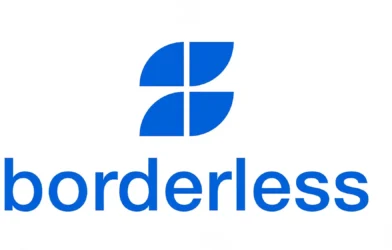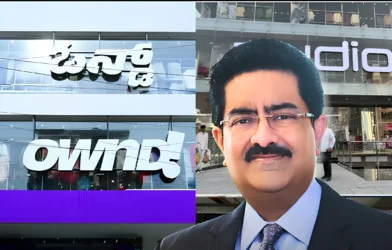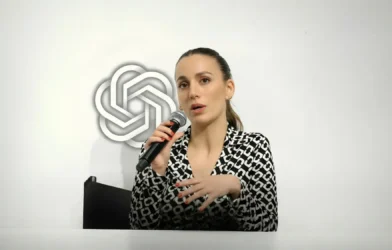In an exclusive interaction with CNBC, Ashish Chauhan, Managing Director & CEO of the National Stock Exchange (NSE), shared his perspective on India’s capital markets, retail investor participation, and the much-anticipated NSE IPO. The discussion also included a rare inside look at NSE’s technology backbone, providing a clearer picture of how the exchange sustains its position as one of the world’s largest and most reliable trading platforms.
Inside NSE’s Technology Backbone
One of the highlights of the conversation was Chauhan’s walk-through of NSE’s critical technology infrastructure. Unlike most financial institutions that operate behind closed doors, Chauhan provided rare insights into the Network Operations Center (NOC), Hardware Operations, and Cyber Security teams that keep the exchange running smoothly.

The NSE handles some of the highest trading volumes in the world, and its systems need to be extremely robust to manage the load without errors or downtime. Chauhan emphasized that NSE’s technology backbone is not just about speed and efficiency, but also about trust and reliability. A single technical glitch in an exchange of this scale could potentially disrupt millions of trades, impact investor confidence, and even ripple across global markets.
Cybersecurity, in particular, has become a top priority. With increasing digital participation, the exchange must constantly guard against threats ranging from phishing to large-scale cyberattacks. Chauhan underlined that the NSE invests heavily in real-time monitoring, advanced encryption, and proactive threat detection to ensure the security of investor data and transactions.
This behind-the-scenes look underscored why the NSE continues to be viewed as one of the world’s most technologically advanced stock exchanges, playing a crucial role in India’s financial system.
Key Insights from the Interview
1. Clearing the Misconception of Over-Trading
One of the biggest misconceptions surrounding India’s markets is that retail investors are overly engaged in speculative trading, particularly in Futures & Options (F&O). Chauhan clarified this narrative with hard data.
The NSE has nearly 120 million unique investors, but only around 2–3 million actively participate in F&O trading. This shows that the scale of speculative activity is far smaller than commonly assumed. Moreover, a significant 80–90% of F&O traders also participate in the cash (equity) market, meaning they are not purely speculative investors but are engaged in long-term investing as well.
By presenting these numbers, Chauhan highlighted that while F&O trading is visible and often reported in the media, it does not represent the bulk of India’s equity market activity. Retail participation continues to grow in a more balanced and sustainable way, with long-term wealth creation being the core driver.
2. Rising Equity Participation in India
Another major theme of the conversation was the growing participation in equities among Indian households. Traditionally, Indian families have preferred safer and more tangible investments such as gold and real estate. However, Chauhan pointed out a visible shift in recent years, with more households redirecting their savings into the stock market.
India’s savings account for nearly 30% of its GDP, and the reallocation of even a fraction of these funds into equities has a transformative impact. Despite India’s relatively modest per capita GDP of around $3,000, its equity market is already larger than many global peers. This is a testament to the depth, liquidity, and governance standards of Indian listed companies.
Chauhan also drew a comparison with China. In China, wealth creation has largely been concentrated within large corporations and industrial houses. In India, by contrast, the framework of strong corporate governance and regulatory oversight has enabled not only large businesses but also retail investors to generate wealth. This democratization of wealth creation is one of the standout features of the Indian equity landscape.
For younger investors in particular, the stock market has become a natural choice. With digital trading platforms, mobile apps, and simplified onboarding processes, it is now easier than ever for individuals to invest. Chauhan suggested that this trend will only accelerate in the coming decade as financial literacy improves and India’s middle class expands.
3. NSE IPO Update
The conversation also touched upon one of the most anticipated events in India’s capital market — the NSE IPO. Investors, analysts, and market participants have been eagerly awaiting this listing, given NSE’s central role in India’s financial system.
Chauhan confirmed that the exchange is currently awaiting a No Objection Certificate (NOC) from SEBI, the market regulator. Once the NOC is granted, the IPO process is expected to take around 8–9 months, factoring in regulatory filings, approvals, and market conditions.
The NSE IPO is expected to be one of the largest public offerings in India’s history, attracting strong interest from both domestic and global investors. Beyond just raising capital, the listing would also enhance transparency and governance, aligning NSE with global practices followed by other leading exchanges.
While Chauhan refrained from providing specific financial details, he emphasized that the IPO would mark a new chapter for the exchange, giving investors an opportunity to directly participate in the growth of India’s financial infrastructure.
Disclaimer: This article is based on public information and media coverage of Ashish Chauhan’s CNBC interview. EQMint has compiled and presented the highlights for informational purposes only. The content does not constitute investment advice, financial guidance, or an official statement from NSE. Readers are advised to verify details independently before making any financial decisions.









